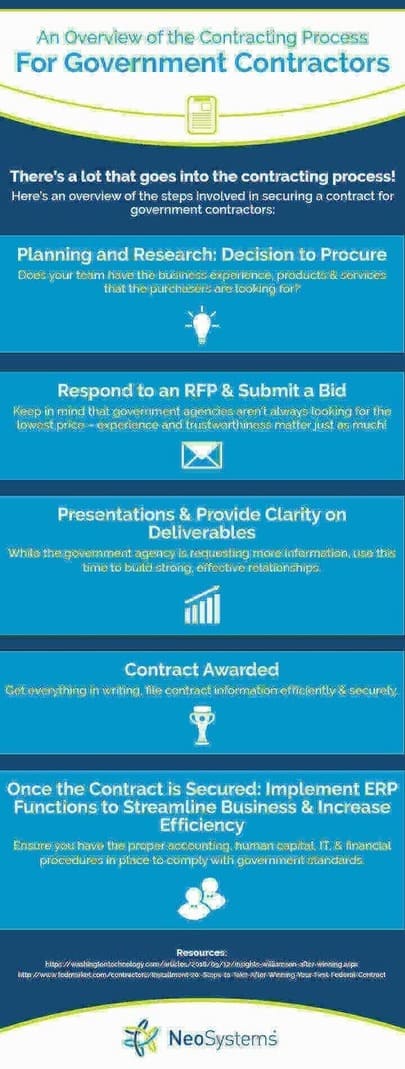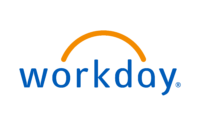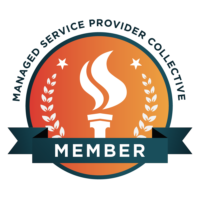Common Pain Points for Government Contractors
This is Part 2 in a 3-part series covering Process Automation.
I have been around Government Contracts long enough to know the stacks of paperwork, manual processes, and sometime brute force it takes to get a proposal out the door, kick off a new contract, or even send out a bill to your government client. When you consider the number of trees, manhours, and stress involved in some of these tasks, it is almost a surprise that no rone thought of doing things more efficiently. In this post, we are going to talk briefly about some of the pains that many government contractors maybe feeling and high-level solutions that may exist from a theoretical standpoint. The solution that NeoSystems uses for this purpose we will talk about in detail in the final part of this process automation series.
Pain #1 – Paperless
Allow me to channel my inner movie announcer… In a world where the government wants environmentally friendly contractors and using less paper, products begin to emerge that change your ways of thinking and your ways of doing things.
*Ahem* what can I say, I always wanted to do voiceover work.
Seriously though, how many filing cabinets line the walls, hallways, storage rooms, and warehouses with ream upon ream of paper. Millions of sheets containing billions of datapoints on 8.5 by 11 or 14 pieces of paper don’t seem like the paperless initiatives the government set out on so many years ago. There have certainly be recent executive orders, regulations, and pushes, but I can remember being a fledgling auditor in 2000 faced with “paperless” challenges. The Lorax would not be happy with our progress over 15 years. I know it has improved, but with the tools we have at our disposal it is interesting we haven’t gone further.
Pain #2 – Manual Labor
I know many of you think that federal regulations are hard enough just complying in the first place. Then, when you really think about it, you start to realize the amount of support it takes from a back-office perspective to really support the compliance effort.
When I started at NeoSystems, I talked to a lot of people. I heard stories of “walking down the hall” (literally) to get an approval for something. I watched as filing cabinets were opened revealing actual signatures on printed invoices. I heard of the late nights spent tracking down, following up, and manually preparing things for approvals, signoffs, and proper routing. The problem was the amount of manual process involved in so much of these things. The equivalency was being made, in some cases, between being “electronic” and being “automated.”
Pain #3 – Traceability and Workload
I love playing the “what if I won the lottery game” far more than what would happen if I got “hit by a bus.” I have heard the “hit by a bus” analogy far more than I care to admit. Regardless, there probably aren’t many non-executive level workers who – if given enough financial resources – would still be doing exactly what they are doing now. Something would change and most likely work would be at least one thing. They wouldn’t be around for their “institutional knowledge” of what they were doing just before they left. This presents a problem for everyone else related to traceability and auditability.
How do you know where something is in a process/procedure? Who was the last to touch this critical item and what did they do with it? When was the last time they were asked to do something about it? If the auditor asks these questions, are you prepared to answer them with specificity to the item at hand, or to the process in general?
Solution #1 – Electronic
Since the early 2000s, touting “paperless” as an initiative, challenge, mandate, or any other really powerful call to action has caused two things to happen that I have experienced. First, there is the company that puts procedures in place to require only certain documents be maintained hardcopy. The problem is these documents are the same ones that go through numerous revisions after being final and still end up using as much paper as pre-paperless. Second, there is the company that decides paperless is tantamount to electronic. In this approach, the maintenance of electronic forms, signatures, and e-mail messages is seen as cutting edge and paperless.
The problem with either of these approaches is the manual interaction that is required in either of them. Let’s throw out the argument about environmental impacts and just think about the time spent printing, waiting, signing, and filing. Alternatively, imagine the lack of control involved in equating electronic and paperless. I would argue that the true sentiment behind paperless methods and procedures is that the process itself becomes automated.
Say what you will about the efficiencies of government, but I was there when DCAA was implementing electronic working papers. It was a tough sell among the tried-and-true legacy auditors, but the process was automated and the documents were electronic – it was paperless. I can remember having a conversation with my supervisor at the time when I was about to submit for review the first completely paperless (literally and figuratively) audit for the office. When I sent him the e-mail (they hadn’t yet automated that piece) he asked me who had the folder. Granted, I did scan a bunch of paper I had received and saved a bunch of e-mails to PDFs, but it was without paper. Later, they ended up printing out the index of files maintained on the CD-ROM backup and sticking that in a folder in a filing cabinet, but that, too, became a thing of the past shortly thereafter.
Solution #2 – E-mail
I hinted at this potential solution throughout. I won’t belabor the problem that e-mail causes in efficiency, nor will I talk about overload of e-mail that nearly everyone experiences. I will share a brief story about the day I turned my e-mail off recently.
My computer had shut down to install updates the night before and I turned it on bright and early around 7:30 a.m. I had a list of things waiting for me from the day before and got to work on it. By 10:30, I had knocked most of my to-do list out and was ready for the next challenge. Then, I realized my horrible mistake (no, it wasn’t that it was a Saturday). I HAD FORGOTTEN TO TURN ON OUTLOOK! I searched frantically for the icon in my Start menu and just before I clicked it, I paused. I knew I didn’t have a meeting until much later in the afternoon. I didn’t receive a single phone call all morning. The system I was working in seemed to be working just fine. I DIDN’T PRESS THE ICON. Later that day, I finally opened it around 4:00. What I found was roughly 120 unread messages (ok, not a lot, but I hate my inbox). What I was left with when I deleted CC, BCC, FYI, duplications, or chains of emails was around 8 that required my attention. I got my whole day back just by leaving e-mail turned off.
The point of this is not that e-mail is somehow spawned from demons, but that the feeling I got – when I wasn’t checking my e-mail constantly wondering if it was important until I was halfway through reading it – that feeling is just wonderful. It is so nice to know if something needs my attention or my input to proceed. Think about that for a moment. If you work in a service industry like I do, you are part of a grander process that is happening. Many times, you are seeking feedback, approval, or more information related to what you are doing so you can complete your task and move the process to the next person. That is a powerful concept that we will get to.
Solution #3 – Dictation/Documentation
This last solution is more about getting you to read this section. I don’t mean that we all need a personal assistant to track and document everything that is done all day, but how do you know? Some people are note takers and REALLY good at it. Some folks have a great memory. Others send e-mail follow-ups, meetings, action items. You get the picture. We are constantly in a world where everything needs to be tracked – shipments, pets, traffic, approvals. For 3 out of 4 of those things, there are relatively easy ways to do that. For approvals (and the process to get there), it isn’t as straight forward.
Many times, an approval is something that is looked at “after the fact.” When a bank gets a check (yes, some people still use them), they are looking to see if a signature is present. They are not prohibiting the check being written until the approver is present, they are validating the approval was granted after the check was written. Internal to the company that wrote the check in the first place, the onus usually falls on treasury or accounting to ensure that only certain people can write checks and only certain few have signature authority. Proper internal control makes the path to approval one that can be difficult to manage real-time and especially interesting to try to track down real-time.
A “Neo” Way of Doing Things
I am someone who enjoys technology and innovation. I also enjoy being able to so easily replace “New” with “Neo” in a little game of wordplay. So, the way NeoSystems approaches many of its pain points is one that I enjoy. Accounting – Deltek. HCM – Ultipro. Resource Management – Saviom. Financial Modeling – TM1. eLearning – Articulate. Contract Management – ContractLogix…
Everywhere we turn at NeoSystems, there is an application for doing what we need to do. Integrify, for us and many of our clients, provides a Neo way of doing process and approval management in a more and more integrated way all the time. Around NeoSystems, Integrify has been called “the glue” that holds together a solution and “the next level” for process automation for bringing a solution together. The application is versatile in managing processes by automating what would normally require the high levels of human intervention I talked about above. Integrify optimizes people-time and process-time in a controlled environment. The cool part, for me, is the constant improvement. Since I started working in Integrify, I have experienced time and time again the same scenario – someone will hear about the system, learn about the system, use the system, and then immediately start to think of the next process they want to build in the system.
Before I start gushing about how great the system is and some specifics on what we have done with it, I will leave you with one final thought for next time. What is the one thing about a process that: a> takes the most time, b> gives you the most hassle, or c> keeps you up at night? We will answer these questions and more in the final part of this series.
If you’d like to learn a bit more about Integrify, join us for our 2-Part Webinar Series, beginning September 16th, on Audit Compliance. I’ll talk about common pain points in the Deltek Costpoint application and show you a few ways to manage your pain with one of our favorite tools!
Check out out infographic on the government contracting process below – no matter which point you’re at in the process, modern-day ERP systems can help streamline business and take your firm to the next level.













